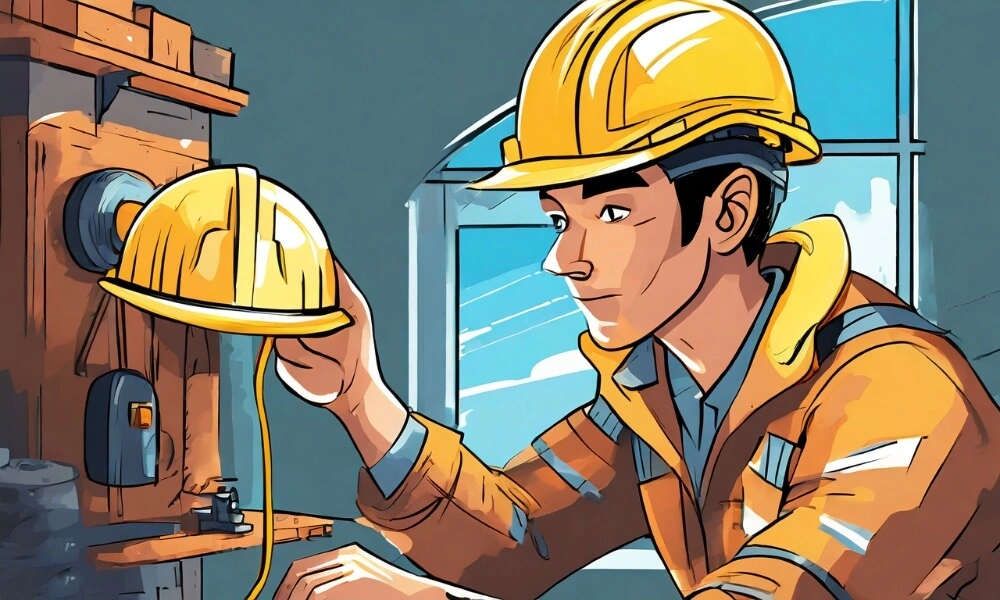As a cyclist, it’s crucial to consider safety measures whenever you hop onto your saddle. Among the most essential safety gears is a bike helmet. But do bike helmets expire? Dive into this comprehensive guide to find out.
Understanding the Lifespan of a Bike Helmet
Understanding the lifespan of a bike helmet is a fundamental aspect of bicycle safety that is often overlooked by many riders. This essential protective gear goes beyond mere aesthetics; it serves as your lifeline in the face of potential accidents on the road.
The primary purpose of a bike helmet is to protect your head from impact. However, its effectiveness diminishes over time due to factors like the wear and tear of materials, changes in temperature, and sweat corrosion. Hence, it’s vital to understand the lifespan of a bike helmet and when it’s right to invest in a new one.
Typically, the lifespan of a bike helmet is around 3-5 years. This duration may shorten if you use it heavily or it gets involved in an accident. Regular inspection is necessary to look for signs of deterioration like cracks in the outer shell, a compressed liner, or loose straps.
Upgrading to a new helmet after its life span ensures that the protective elements of the helmet are intact. Helmets available today are safer and more comfortable than ever before, thanks to technological advancements. For instance, you can find options with a better ventilation system, enhanced fit, lightweight, and aerodynamic design at our online bike store.
Remember, it’s not worth compromising your safety to save money by extending the use of a helmet beyond its lifespan. Take a moment to think, would you want to risk a possible concussion or worse? Probably not.
Riding your bicycle should be enjoyable and free from the worry of sustaining head injuries. Ensuring that your bike helmet is still effective is a simple way to keep your cycling adventures safe and fun. Check out a wide range of bike helmets available at this link.

What Happens as a Helmet Ages
As a safety accessory that has perhaps saved countless lives in the biking world, understanding what happens as a helmet ages can help us appreciate when it’s time to let go and replace it with a newer model.
A bike helmet may seem inanimate, but it undergoes significant changes over time due to various factors. Most helmet manufacturers recommend replacing a helmet every 3-5 years even if it hasn’t been involved in an accident, but why is that?
The answer lies in the ageing process of the helmet.
As a helmet ages, its materials start to degrade due to exposure to UV light, temperature variations, and everyday wear and tear. The plastic shell may start to become brittle, reducing its ability to effectively distribute impact forces. The foam inside the helmet, often made from expanded polystyrene (EPS), may also become less effective at absorbing the energy from an impact as it ages.
The EPS foam, in particular, is susceptible to compression over time, meaning it may become denser and less capable of cushioning your head during a collision. In addition, straps and fasteners can become worn out and less reliable. Sweat, hair products, and cleaning products can all expedite this process.
Temperature variations can affect the physical structure of your helmet. Hot temperatures can cause the helmet’s materials to expand, and cold temperatures can cause them to contract. This continuous expansion and contraction over time can lead to microcracks, which may not be visible to the naked eye but can significantly reduce the helmet’s protective properties.
Moreover, the comfort padding inside the helmet, responsible for ensuring a snug fit, tends to compact and harden over time, reducing the overall performance and comfort of the helmet.
Understanding the aging process of helmets underscores the importance of regular replacement. Ensure to check your helmet regularly for signs of wear and tear, including cracks in the shell, changes in the fit, frayed straps, and degradation of the interior padding.

Factors That Can Shorten a Helmet’s Lifespan
Every cyclist knows the importance of a good bike helmet. Helmets serve a crucial function in protecting our heads in the event of an accident. But, like most products, they don’t last forever. The lifespan of a helmet is influenced by a variety of factors, many of which can shorten its lifespan significantly. It’s essential to understand these factors to help ensure your helmet is always in good condition and providing the optimal protection when you need it the most.
- Accidents: This is the most obvious factor. If your helmet has been involved in a crash or dropped from a height, its integrity could be compromised. The damage might not always be visible, but the protective foam inside the helmet can crack or compress, reducing its ability to absorb impact in the future.
- Sunlight Exposure: Prolonged exposure to sunlight can degrade the materials of your helmet, particularly the plastic shell, and shorten its lifespan. This degradation can lead to a brittle shell that cracks easily under pressure.
- Chemical Exposure: Hair products, cleaning agents, paint, or fuel can all react with the materials of your helmet, causing them to degrade over time.
- Heat and Cold: Helmets are designed to withstand usual temperature ranges, but extreme heat or cold can affect their structure, making them brittle or causing their foam to shrink or expand, affecting their protective capacity.
- Wear and Tear: Regular use of your helmet, combined with the effects of sweat, dust, and dirt, can wear down its components, such as the straps, buckles, and padding.
These factors underline the need to replace your helmet regularly and pay attention to its storage and cleaning. Always store your helmet in a cool, dry place out of direct sunlight. Clean it gently with mild soap and water, avoiding harsh chemicals or abrasives.
Do not overlook the importance of a well-fitting, well-maintained helmet in your biking adventures. It’s your first line of defense and can mean the difference between a minor injury and a serious one.

Choosing a New Helmet: Key Safety Tips
Selecting the right helmet is about more than just finding a style you like, or a colour that matches your bike. The key function of a helmet is to protect you in case of an accident, so safety must always be your primary consideration. Here are some essential safety tips to keep in mind when choosing a new helmet:
- Correct Fit: A helmet must fit correctly to provide maximum protection. It should sit snugly on your head, with the front sitting about an inch above your eyebrows. Look for a helmet with adjustable straps and sizing pads to help achieve the perfect fit.
- Safety Standards: Ensure that the helmet you choose meets established safety standards. These standards ensure the helmet’s impact-absorbing capacity is up to par. The sticker inside the helmet usually displays this information.
- Adequate Ventilation: Although not a direct safety feature, adequate ventilation enhances comfort, which can indirectly affect safety. A well-ventilated helmet will keep your head cooler, making your rides more enjoyable, especially in warm weather.
- Visible Color: While aesthetics may attract you to darker shades, brighter colors or those that contrast with the environment are safer as they make you more visible to other road users.
- Reputable Brands: While generic helmets can be cheaper, they often compromise on safety standards. Investing in a helmet from a reputable brand guarantees you’re getting a quality product that will provide reliable protection.
- Replace Regularly: As we mentioned in our previous post on understanding the lifespan of a bike helmet, helmets need replacing every three to five years, or immediately after a significant impact, even if there’s no visible damage.
Consider these tips when you’re shopping for a new helmet. It’s also a good idea to try on different models to find the most comfortable fit. Remember, a helmet can only protect you if it fits well and is in good condition.
Visit our bike store and helmet collection to find a wide variety of safety-approved helmets for all types of riders. Invest in your safety today, because when it comes to biking, nothing is more crucial than protecting your head. Safe riding, everyone!
 Shuangye ebike
Shuangye ebike
